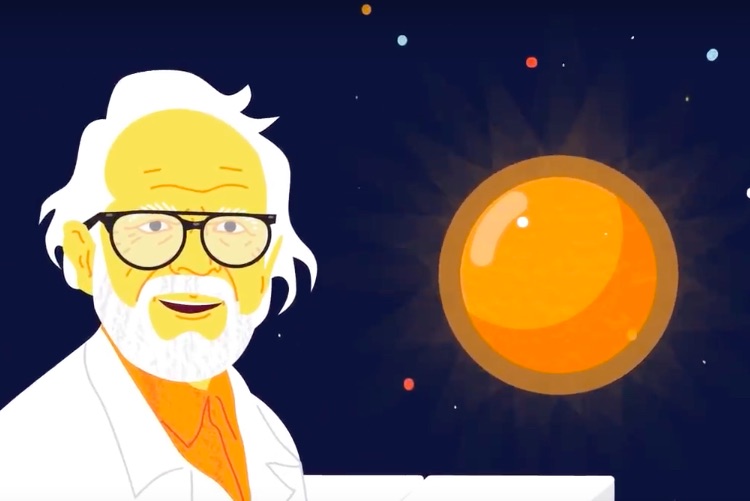Dark Matter
Astrophysicist Simon White on dark matter, its role in explaining the formation of the universe, and the chall...

In February 2015 the Astronomy & Astrophysics Journal published an article Kepler-432 b: a massive warm Jupiter in a 52 day eccentric orbit transiting a giant star about rare planets, extreme seasons and planetrary evolution. We have asked one of the authors of this research, Dr. Davide Gandolfi from Heidelberg University, to comment on this work.
My main scientific interests include the search and study of transiting exoplanets within the context of space-based photometric missions such as CoRoT and Kepler. I combine the exquisite photometry from space with high-precision radial velocity measurements taken with high resolution spectrographs on ground.
Why do we bother about transiting exoplanets? Because they are cornerstones for understanding the nature of planets orbiting stars other than the Sun. By combining transit photometry with radial velocity measurements, it is possible to derive the planet radius, mass, and bulk density, allowing astronomers to investigate their composition and internal structure.
Why do we need space photometry? Because the superb and uninterrupted photometry achievable from space can open up the doors to planet parameter spaces that are not easily accessible from the ground, most notably, the Earth-radius planet domain.
To further investigate this trend, we selected a sample of giant stars that were previously identified as planet hosting star candidates by the NASA Kepler space mission. We selected candidates with semi-major axis smaller that 0.5 astronomical unit. Kepler-432 was in our list! We used the CAFE spectrograph mounted at the 2.2-meter telescope of Calar Alto Observatory (Almería, Spain) and the FIES spectrograph mounted at the 2.56-meter Nordic Optical Telescope of Roque de los Muchachos Observatory (La Palma, Spain) to collect high-precision radial velocity measurements of these candidates.
Kepler-432b was first observed with the CAFE spectrograph in June 2014. The promising results obtained with CAFE prompted us to continue the spectroscopic follow-up with the FIES spectrograph in Jule 2014. Additional measurements were also taken in August, September, and October 2014 through the director’s discretionary time and the fast-track observing proposal.
Kepler-432b is a real rarity among exoplanets around giant stars: it is a close-in, massive, gas-giant planet on a 52-day eccentric orbit transiting a giant star. With a semi-major axis of 0.3 astronomical units, it is one of the few close-in planets known to orbit a giant star. The paucity of close-in planets around giant stars is likely to be due to the fact that these planets have been already engulfed by their host stars. As a matter of fact, the radius of Kepler-432b’s host star is already 4.13 times the Sun radius and is quickly increasing. In less than 200 million years – a short time, astronomically speaking – the stellar radius will be large enough for the star to swallow up its planet.
Kepler-432b has a mass six times that of Jupiter, but is about the same size. The planes is likely to have a dense core that accounts for 6 percent of the planet’s mass. The highly eccentric orbit (e=0.5) brings Kepler-432b at only 0.16 astronomical units from its host star, before taking it to about three times as far away. This creates enormous temperature differences over the course of the planet year, which is equivalent to 52 days. During the long winter season, the temperature on Kepler-432b goes down to 500 degrees Celsius. In the short summer season, it can increase to nearly 1000 degrees Celsius.
There are still close-in planet candidates around giant stars that were identified by the Kepler mission and need spectroscopic follow-up from ground. In the long term, upcoming space missions like CHEOPS, TESS, and PLATO will allow us to further investigate the population of transiting planets around giant stars.

Astrophysicist Simon White on dark matter, its role in explaining the formation of the universe, and the chall...

The dense cores of star-forming clouds have been observed for the first time in a tiny dwarf galaxy.

Director of research at LATMOS, Jean-Loup Bertaux, on the current locations of Voyager One and Two, the Heliop...